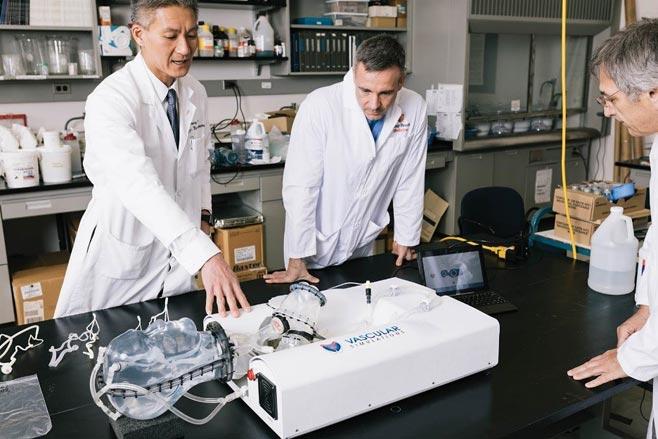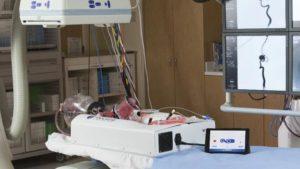 Nothing poses a greater threat to the livelihood of the human body than cardiovascular disease, which, according to the American Heart Association, is the leading global cause of death, accounting for over 17.3 million deaths per year. Prior to recent medical innovations, traditional treatment was considered invasive and quite risky, but new and improved operational options have opened up thanks in part to 3D printing technology. One Stony Brook, New York-based medical company, called Vascular Simulations, has been utilizing additive manufacturing technology provided by the established 3D printing solutions company Stratasys, looking to enhance the training and treatment methods for dealing with cardiovascular disease.
Nothing poses a greater threat to the livelihood of the human body than cardiovascular disease, which, according to the American Heart Association, is the leading global cause of death, accounting for over 17.3 million deaths per year. Prior to recent medical innovations, traditional treatment was considered invasive and quite risky, but new and improved operational options have opened up thanks in part to 3D printing technology. One Stony Brook, New York-based medical company, called Vascular Simulations, has been utilizing additive manufacturing technology provided by the established 3D printing solutions company Stratasys, looking to enhance the training and treatment methods for dealing with cardiovascular disease.
Founded in 2011, Vascular Simulations was started by a multi-disciplinary team consisting of physicians, researchers, biomedical and mechanical engineers, and entrepreneurs. They ultimately integrated 3D printing technology into their business model, which has helped surgeons both learn and teach advanced endovascular techniques through 3D printed models that assimilate certain disease and patient-specific scenarios. To create these personalized 3D models, Vascular Simulations has relied on FDM 3D printing technology from Stratasys, which has greatly assisted with patient care and surgical training.
The medical company’s Vascular Simulations Replicator training simulation provides surgeons with extremely realistic conditions to help prepare for endovascular procedures. The Replicator features a functional left atrium and ventricle, fluid mechanics that mimic blood flow, a silicone aorta, as well as physiologic parameters and a heating system, which help integrate real-life conditions within the replicated vascular model. 3D printed vascular models have been used by prestigious establishments in the past, such as the Jacobs Institute and researchers from Harvard, but these models have yet to reach the realistic conditions that Vascular Simulations has achieved with the help of Stratasys.
 To create these initial 3D printed models, Vascular Simulations first takes imaging data from CT scans or MRIs, which is converted to a 3D model using a 3D medical image processing software. Once these models are trimmed and modified to meet patient-specific conditions, the final model is 3D printed with a Stratasys Dimension Elite 3D Printer. Then, after the surface is smoothed to rid the 3D printed model of imperfections, a coat of silicone is applied. Once the ABS model is dissolved away, only the silicone version of the model remains. The silicone vessels are then used in conjunction with the Vascular Simulations Replicator, creating a final product that effectively replicates the real-life properties of the body’s vessels much better than a strictly 3D printed model would. This advanced process that took Vascular Simulations about five years to fully develop.
To create these initial 3D printed models, Vascular Simulations first takes imaging data from CT scans or MRIs, which is converted to a 3D model using a 3D medical image processing software. Once these models are trimmed and modified to meet patient-specific conditions, the final model is 3D printed with a Stratasys Dimension Elite 3D Printer. Then, after the surface is smoothed to rid the 3D printed model of imperfections, a coat of silicone is applied. Once the ABS model is dissolved away, only the silicone version of the model remains. The silicone vessels are then used in conjunction with the Vascular Simulations Replicator, creating a final product that effectively replicates the real-life properties of the body’s vessels much better than a strictly 3D printed model would. This advanced process that took Vascular Simulations about five years to fully develop.
By utilizing 3D printing solutions, these silicone-based vessel models can be designed and manufactured to replicate almost any blood vessel, directly and accurately prototyped from the actual patient in question. The ability to replicate the anatomy of a diseased patient is what makes this process superior to other traditional training models. The Replicator system has already been utilized to treat patients by Vascular Simulations CEO Dr. Henry Woo, who is also a practicing endovascular neurosurgeon at Stony Brook University Hospital. A case study was recently published by Vascular Simulations detailing their 3D print-driven technique, which was utilized by Dr. Woo and his colleagues to help save a patient from an extremely dangerous brain aneurysm.

Dr. Woo (left) and his colleagues, Dr. David Fiorella (center) and Dr. Baruch Lieber (right) with the Replicator
This hands-on training method has proven to be much more efficient than virtual training, as 3D printing technology allows the Vascular Simulations team to examine even the most intricate and tortuous vessels in the brain. By implementing these custom-made silicone vessels into their Replicator system, the physicians are better able to educate and train themselves for various endovascular procedures. Thanks to the 3D printing technology provided by Stratasys, surgeons and physicians affiliated with Vascular Simulations are now able to prepare themselves with a realistic surgical experience, enabling them to be quicker and more effective once the time comes to treat an actual patient. Discuss these new developments over in the 3D Printed Blood Vessels forum at 3DPB.com.
[Source: Stratasys]
Subscribe to Our Email Newsletter
Stay up-to-date on all the latest news from the 3D printing industry and receive information and offers from third party vendors.
You May Also Like
3D Printing Unpeeled: New Arkema Material for HP, Saddle and Macro MEMS
A new Arkema material for MJF is said to reduce costs per part by up to 25% and have an 85% reusability ratio. HP 3D HR PA 12 S has been...
3D Printing News Briefs, January 20, 2024: FDM, LPBF, Underwater 3D Printer, Racing, & More
We’re starting off with a process certification in today’s 3D Printing News Briefs, and then moving on to research about solute trapping, laser powder bed fusion, and then moving on...
3D Printing Webinar and Event Roundup: December 3, 2023
We’ve got plenty of events and webinars coming up for you this week! Quickparts is having a Manufacturing Roadshow, America Makes is holding a Member Town Hall, Stratafest makes two...
Formnext 2023 Day Three: Slam Dunk
I’m high—high on trade show. I’ve met numerous new faces and reconnected with old friends, creating an absolutely wonderful atmosphere. The excitement is palpable over several emerging developments. The high...
































